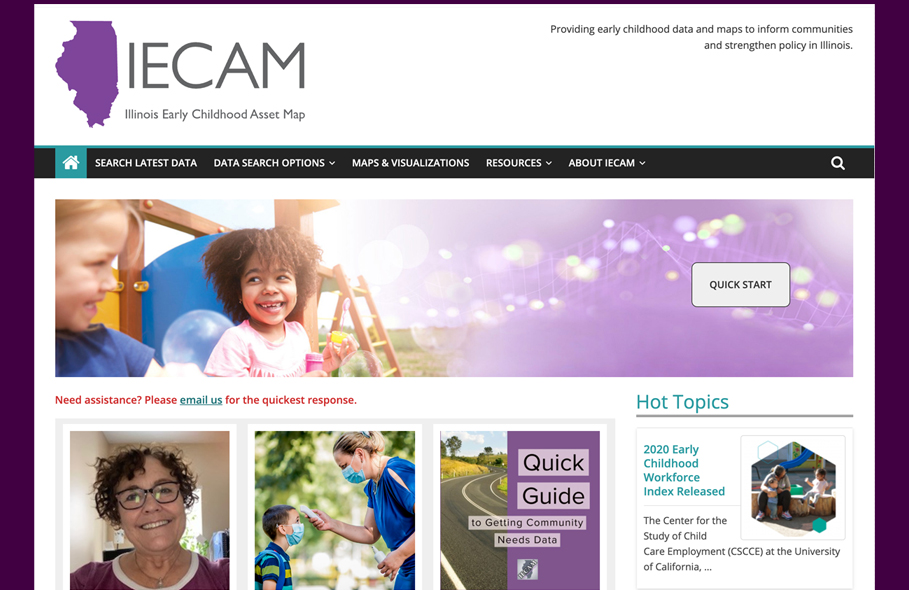New Early Childhood Data Portal in Development
by Tom Hanlon / Mar 10, 2021

Illinois Early Childhood Asset Map (IECAM) is creating a portal for school district personnel to use in making data-informed decisions that will benefit young students across the state.
School district employees across Illinois will soon be able to more easily make informed, data-driven decisions to improve student learning.
That’s because a community portal for early childhood data is in the works in a partnership between IECAM—Illinois Early Childhood Asset Map—and Illinois Action for Children, an advocacy group that focuses on access to quality, safe, and affordable childcare.
IECAM was created in 2006 to be an interactive, Web-based tool to support transparent decision-making regarding early childhood education funding. It is housed at the University of Illinois at Urbana-Champaign.
“Illinois Action for Children called us and wanted to know if we could put together a report that looked at 17 different data types for two school districts,” says Dawn Thomas, IECAM director and co-principal investigator. IECAM’s data team built the report for Illinois Action for Children, “and it has grown exponentially into a portal that will be on the Illinois Action for Children’s website,” Thomas says.
Interactive Maps, Flexible Data
School district personnel will be able to obtain data and maps and generate reports from the portal.
From the original two school districts, the plan quickly escalated. “We want to have that kind of portal on the IECAM website for every geographic region in the state—from state level to community, municipality, county, township, zip code, school district, legislative district, federal congressional district level, you name it,” Thomas says. “If we can get the data, we will divide it up, drill it down, and then people will be able to go in and at the click of a button they get this interactive data.”
For example, she says, people will be able to click on cells and learn both percentages and numbers of children living at, say, 100 percent federal poverty level, or at 200 percent. The data will be very flexible in how it can be accessed and used.
Data that will be available include types of early childhood programs, number of program sites, number of funded enrollment spots, and various demographic data. “Really, any of the data that tends to show up in research as being predictive of academic failure or risk” will be available, Thomas says.
The portal will make it easier to access and use the data, because it will all be in one spot, she adds. People won’t have to go searching all over the site for the information.
The portal, in beta version now, will likely be available by the end of June, Thomas adds.
The Face of Integrated Data for the State
“As long as Catherine Corr (co-principal investigator and assistant professor in Special Education at the College of Education) and I have been involved with IECAM, the state has been talking about how they want to integrate and standardize the data so different data agencies and databases can talk to each other,” Thomas says.
IECAM is a part of this new state initiative to standardize and integrate data to help policy makers, advocates, and other stakeholders make informed, evidence-based decisions across state agencies and early care and education programs.
“We are so excited to be the face of all this for the early childhood community,” Thomas says.